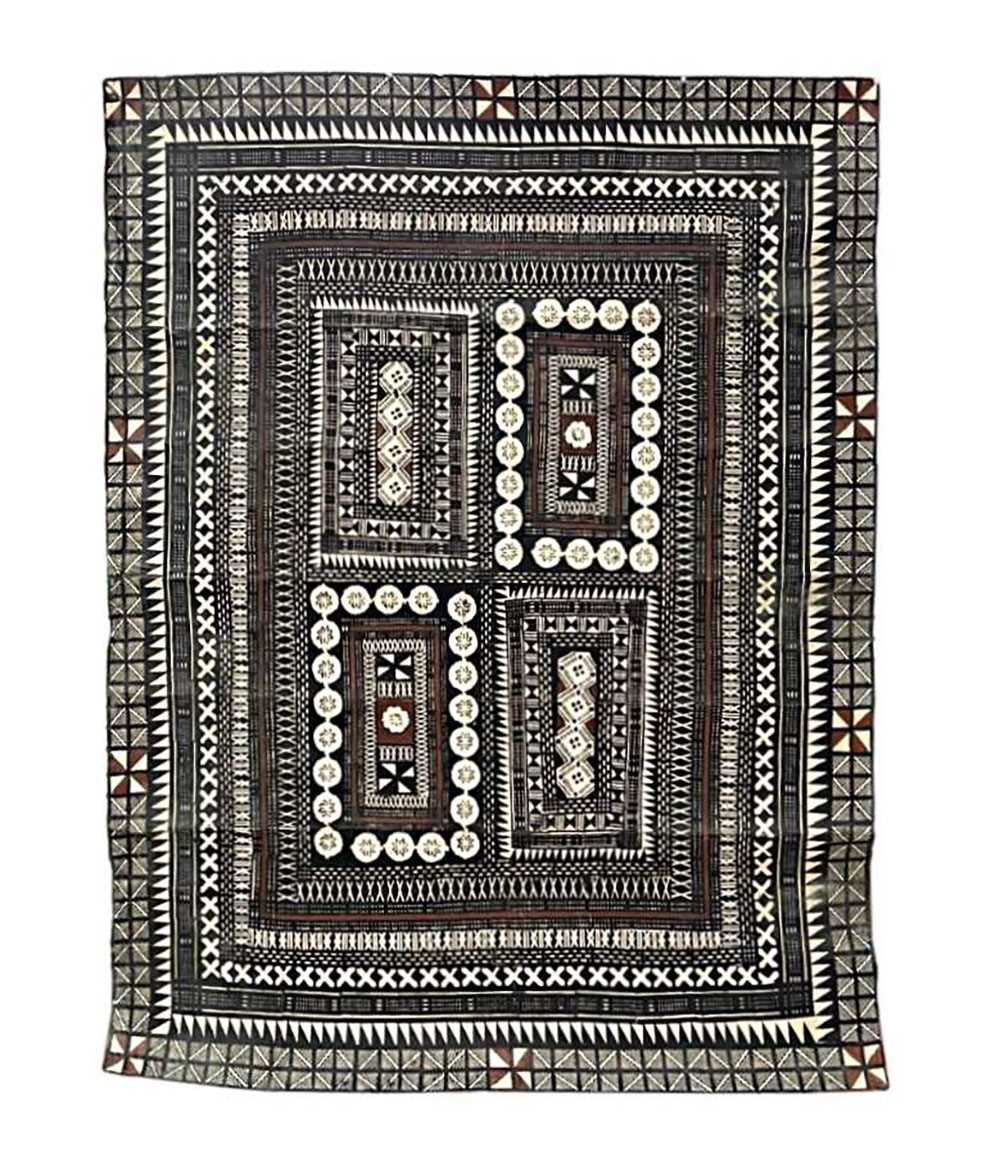13th Apr, 2024 13:00
Contemporary Living
32
A Samoan Tapa Cloth
Bark cloth, pigment, tapa.
The making of barkcloth or tapa was once widespread throughout the islands of the Pacific. Today it is most strongly practised in the west Polynesian island groups of Fiji, Tonga, and Samoa. Barkcloth made in Samoa is called siapo.
Materials:
Siapo makers use the bark of the u'a (paper mulberry tree) to make their cloth. The bark is carefully peeled off the tree in strips and then the inner bark is separated and scraped clean. It is then pounded until it widens into a larger size. The pieces of cloth go through a process where they are pasted together to make a larger cloth then decorated.
Decoration techniques:
Siapo are decorated in two ways: either freehand or by taking rubbings off a relief pattern carved into a plank or board. The dyes are made from a variety of plants and trees and an earth ochre called 'ele. Freehand-decorated siapo are called siapo mamanu. The creative flair of siapo makers is seen in the arrangement of the motifs and the clever use of a restricted colour palette. The motifs used usually represent plants and animals.
123 x 155 cm.
Sold for €104
Bark cloth, pigment, tapa.
The making of barkcloth or tapa was once widespread throughout the islands of the Pacific. Today it is most strongly practised in the west Polynesian island groups of Fiji, Tonga, and Samoa. Barkcloth made in Samoa is called siapo.
Materials:
Siapo makers use the bark of the u'a (paper mulberry tree) to make their cloth. The bark is carefully peeled off the tree in strips and then the inner bark is separated and scraped clean. It is then pounded until it widens into a larger size. The pieces of cloth go through a process where they are pasted together to make a larger cloth then decorated.
Decoration techniques:
Siapo are decorated in two ways: either freehand or by taking rubbings off a relief pattern carved into a plank or board. The dyes are made from a variety of plants and trees and an earth ochre called 'ele. Freehand-decorated siapo are called siapo mamanu. The creative flair of siapo makers is seen in the arrangement of the motifs and the clever use of a restricted colour palette. The motifs used usually represent plants and animals.
123 x 155 cm.
Auction: Contemporary Living, 13th Apr, 2024
Hessink's is verheugd om u onze aankomende veiling Contemporary Living te presenteren. Voortbouwend op het opmerkelijke succes van onze inaugurale veiling, bied Contemporary Living u een spannende fusie van hedendaagse kunst, Afrikaanse en Oceanische kunst, en 20e-eeuws design.
De veiling zal op 13 april 2024 plaats vinden, in onze nieuwe veilinghal in Beek, Limburg.
Hessink's is delighted to announce the upcoming Contemporary Living auction, scheduled for April 13, 2024. Building on the remarkable success of our inaugural sale, Contemporary Living promises an exciting fusion of contemporary art, African and Oceanic art, and 20th-century design.
If you wish to join our next contemporary living auction, then please contact us via info@hessink.com.
Viewing
5 and 6 April, from 10:00 to 17:00 hours
8 to 12 April, from 10:00 to 17:00 hours
